tl;dr: Don t just
apt install rustc cargo. Either do that and make sure to use only Rust libraries from your distro (with the tiresome config runes below); or, just use
rustup.
Don t do the obvious thing; it s never what you want
Debian ships a Rust compiler, and a large number of Rust libraries.
But if you just do things the obvious default way, with
apt install rustc cargo, you will end up using Debian s
compiler but
upstream libraries, directly and uncurated from crates.io.
This is not what you want. There are about two reasonable things to do, depending on your preferences.
Q. Download and run whatever code from the internet?
The key question is this:
Are you comfortable downloading code, directly from hundreds of upstream Rust package maintainers, and running it ?
That s what
cargo does. It s one of the main things it s
for. Debian s
cargo behaves, in this respect, just like upstream s. Let me say that again:
Debian s cargo promiscuously downloads code from crates.io just like upstream cargo.
So if you use Debian s cargo in the most obvious way, you are
still downloading and running all those random libraries. The only thing you re
avoiding downloading is the Rust compiler itself, which is precisely the part that is most carefully maintained, and of least concern.
Debian s cargo can even download from crates.io when you re building official Debian source packages written in Rust: if you run
dpkg-buildpackage, the downloading is suppressed; but a plain
cargo build will try to obtain and use dependencies from the upstream ecosystem. ( Happily , if you do this, it s quite likely to bail out early due to version mismatches, before actually downloading anything.)
Option 1: WTF, no I don t want curl bash
OK, but then you must limit yourself to libraries available
within Debian. Each Debian release provides a curated set. It may or may not be sufficient for your needs. Many capable programs can be written using the packages in Debian.
But any
upstream Rust project that you encounter is likely to be a pain to get working, unless their maintainers specifically intend to support this. (This is fairly rare, and the Rust tooling doesn t make it easy.)
To go with this plan,
apt install rustc cargo and put this in your configuration, in
$HOME/.cargo/config.toml:
[source.debian-packages]
directory = "/usr/share/cargo/registry"
[source.crates-io]
replace-with = "debian-packages"
This causes cargo to look in
/usr/share for dependencies, rather than downloading them from crates.io. You must then install the
librust-FOO-dev packages for each of your dependencies, with
apt.
This will allow you to write your own program in Rust, and build it using
cargo build.
Option 2: Biting the curl bash bullet
If you want to build software that isn t specifically targeted at Debian s Rust you will probably
need to use packages from crates.io,
not from Debian.
If you re doing to do that, there is little point not using
rustup to get the latest compiler. rustup s install rune is alarming, but cargo will be doing exactly the same kind of thing, only worse (because it trusts many more people) and more hidden.
So in this case:
do run the
curl bash install rune.
Hopefully the Rust project you are trying to build have shipped a
Cargo.lock; that contains hashes of all the dependencies that
they last used and tested. If you run
cargo build --locked, cargo will
only use those versions, which are hopefully OK.
And you can run
cargo audit to see if there are any reported vulnerabilities or problems. But you ll have to bootstrap this with
cargo install --locked cargo-audit; cargo-audit is from the
RUSTSEC folks who do care about these kind of things, so hopefully running their code (and their dependencies) is fine. Note the
--locked which is needed because
cargo s default behaviour is wrong.
Privilege separation
This approach is rather alarming. For my personal use, I wrote a privsep tool which allows me to run all this upstream Rust code as a separate user.
That tool is
nailing-cargo. It s not particularly well productised, or tested, but it does work for at least one person besides me. You may wish to try it out, or consider alternative arrangements.
Bug reports and patches welcome.
OMG what a mess
Indeed. There are large number of technical and social factors at play.
cargo itself is deeply troubling, both in principle, and in detail. I often find myself severely disappointed with its maintainers decisions. In mitigation, much of the wider Rust upstream community
does takes this kind of thing very seriously, and often makes good choices.
RUSTSEC is one of the results.
Debian s technical arrangements for Rust packaging are quite dysfunctional, too: IMO the scheme is based on fundamentally wrong design principles. But, the Debian Rust packaging team is dynamic, constantly working the update treadmills; and the team is generally welcoming and helpful.
Sadly last time I explored the possibility, the Debian Rust Team didn t have the appetite for more fundamental changes to the
workflow (including, for example,
changes to dependency version handling). Significant improvements to upstream cargo s approach seem unlikely, too; we can only hope that eventually someone might manage to supplant it.
edited 2024-03-21 21:49 to add a cut tag
comments
 This blog post shares my thoughts on attending Kubecon and CloudNativeCon 2024 Europe in Paris. It was my third time at
this conference, and it felt bigger than last year s in Amsterdam. Apparently it had an impact on public transport. I
missed part of the opening keynote because of the extremely busy rush hour tram in Paris.
On Artificial Intelligence, Machine Learning and GPUs
Talks about AI, ML, and GPUs were everywhere this year. While it wasn t my main interest, I did learn about GPU resource
sharing and power usage on Kubernetes. There were also ideas about offering Models-as-a-Service, which could be cool for
Wikimedia Toolforge in the future.
See also:
On security, policy and authentication
This was probably the main interest for me in the event, given Wikimedia Toolforge was about to migrate away from Pod
Security Policy, and we were currently evaluating different alternatives.
In contrast to my previous attendances to Kubecon, where there were three policy agents with presence in the program
schedule, Kyverno, Kubewarden and OpenPolicyAgent (OPA), this time only OPA had the most relevant sessions.
One surprising bit I got from one of the OPA sessions was that it could work to authorize linux PAM sessions. Could this
be useful for Wikimedia Toolforge?
This blog post shares my thoughts on attending Kubecon and CloudNativeCon 2024 Europe in Paris. It was my third time at
this conference, and it felt bigger than last year s in Amsterdam. Apparently it had an impact on public transport. I
missed part of the opening keynote because of the extremely busy rush hour tram in Paris.
On Artificial Intelligence, Machine Learning and GPUs
Talks about AI, ML, and GPUs were everywhere this year. While it wasn t my main interest, I did learn about GPU resource
sharing and power usage on Kubernetes. There were also ideas about offering Models-as-a-Service, which could be cool for
Wikimedia Toolforge in the future.
See also:
On security, policy and authentication
This was probably the main interest for me in the event, given Wikimedia Toolforge was about to migrate away from Pod
Security Policy, and we were currently evaluating different alternatives.
In contrast to my previous attendances to Kubecon, where there were three policy agents with presence in the program
schedule, Kyverno, Kubewarden and OpenPolicyAgent (OPA), this time only OPA had the most relevant sessions.
One surprising bit I got from one of the OPA sessions was that it could work to authorize linux PAM sessions. Could this
be useful for Wikimedia Toolforge?
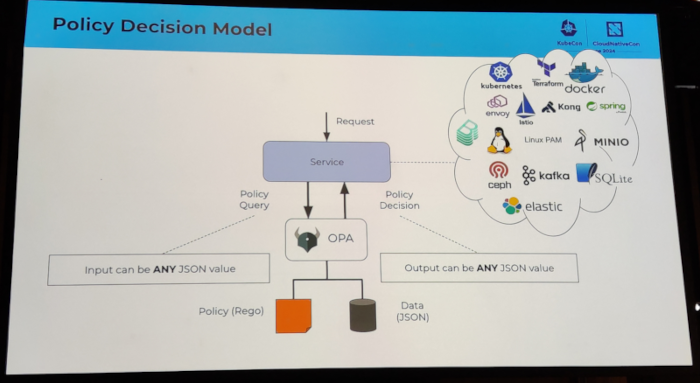 I attended several sessions related to authentication topics. I discovered the keycloak software, which looks very
promising. I also attended an Oauth2 session which I had a hard time following, because I clearly missed some additional
knowledge about how Oauth2 works internally.
I also attended a couple of sessions that ended up being a vendor sales talk.
See also:
On container image builds, harbor registry, etc
This topic was also of interest to me because, again, it is a core part of Wikimedia Toolforge.
I attended a couple of sessions regarding container image builds, including topics like general best practices, image
minimization, and buildpacks. I learned about kpack, which at first sight felt like a nice simplification of how the
Toolforge build service was implemented.
I also attended a session by the Harbor project maintainers where they shared some valuable information on things
happening soon or in the future , for example:
I attended several sessions related to authentication topics. I discovered the keycloak software, which looks very
promising. I also attended an Oauth2 session which I had a hard time following, because I clearly missed some additional
knowledge about how Oauth2 works internally.
I also attended a couple of sessions that ended up being a vendor sales talk.
See also:
On container image builds, harbor registry, etc
This topic was also of interest to me because, again, it is a core part of Wikimedia Toolforge.
I attended a couple of sessions regarding container image builds, including topics like general best practices, image
minimization, and buildpacks. I learned about kpack, which at first sight felt like a nice simplification of how the
Toolforge build service was implemented.
I also attended a session by the Harbor project maintainers where they shared some valuable information on things
happening soon or in the future , for example:
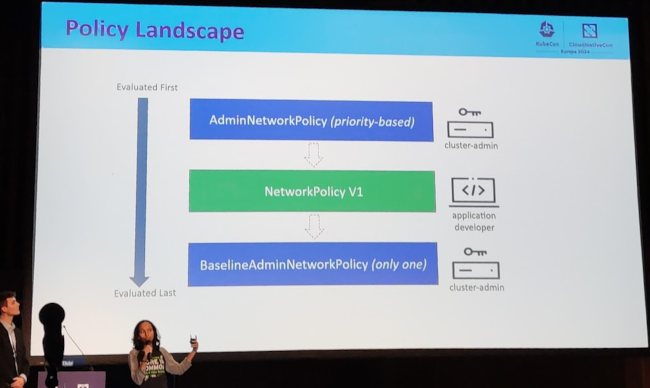 I very recently missed some semantics for limiting the number of open connections per namespace, see Phabricator
T356164: [toolforge] several tools get periods of connection refused (104) when connecting to
wikis This functionality should be available in the lower level tools, I
mean Netfilter. I may submit a proposal upstream at some point, so they consider adding this to the Kubernetes API.
Final notes
In general, I believe I learned many things, and perhaps even more importantly I re-learned some stuff I had forgotten
because of lack of daily exposure. I m really happy that the cloud native way of thinking was reinforced in me, which I
still need because most of my muscle memory to approach systems architecture and engineering is from the old pre-cloud
days. That being said, I felt less engaged with the content of the conference schedule compared to last year. I don t
know if the schedule itself was less interesting, or that I m losing interest?
Finally, not an official track in the conference, but we met a bunch of folks from
Wikimedia Deutschland. We had a really nice time talking about how
wikibase.cloud uses Kubernetes, whether they could run in Wikimedia Cloud Services, and why
structured data is so nice.
I very recently missed some semantics for limiting the number of open connections per namespace, see Phabricator
T356164: [toolforge] several tools get periods of connection refused (104) when connecting to
wikis This functionality should be available in the lower level tools, I
mean Netfilter. I may submit a proposal upstream at some point, so they consider adding this to the Kubernetes API.
Final notes
In general, I believe I learned many things, and perhaps even more importantly I re-learned some stuff I had forgotten
because of lack of daily exposure. I m really happy that the cloud native way of thinking was reinforced in me, which I
still need because most of my muscle memory to approach systems architecture and engineering is from the old pre-cloud
days. That being said, I felt less engaged with the content of the conference schedule compared to last year. I don t
know if the schedule itself was less interesting, or that I m losing interest?
Finally, not an official track in the conference, but we met a bunch of folks from
Wikimedia Deutschland. We had a really nice time talking about how
wikibase.cloud uses Kubernetes, whether they could run in Wikimedia Cloud Services, and why
structured data is so nice.
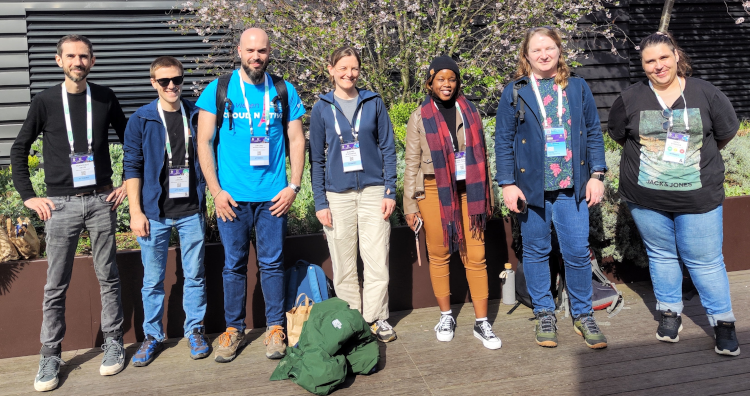
 Turns out that VPS provider Vultr's
Turns out that VPS provider Vultr's
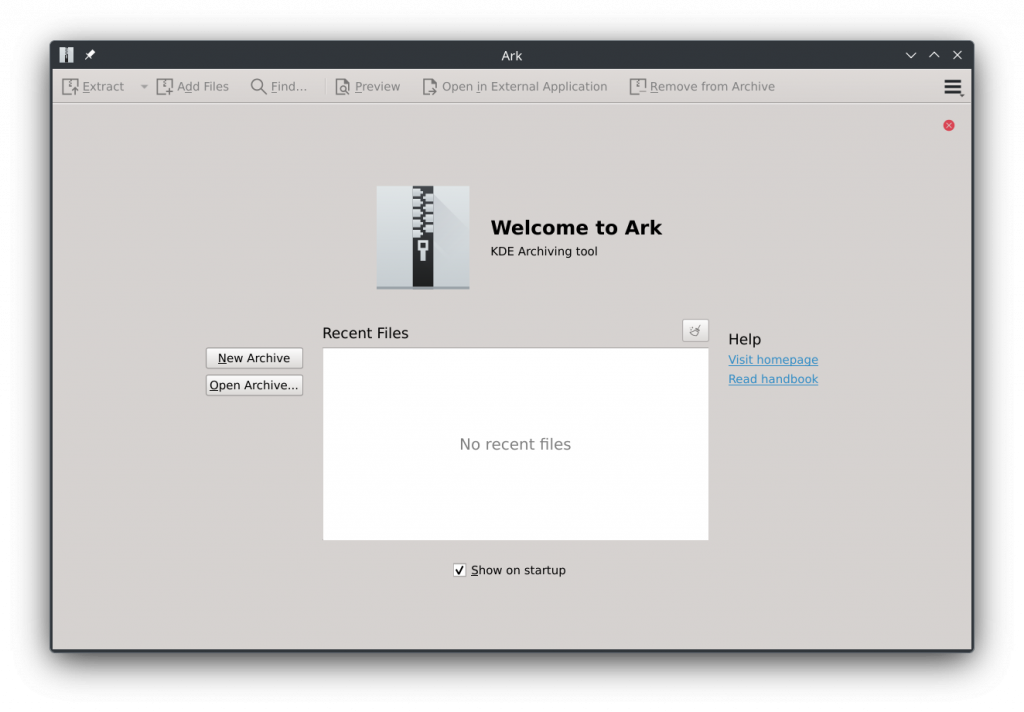

 I recently became a maintainer of/committer to
I recently became a maintainer of/committer to  Thanks to All Saints Day, I ve just had a 5 days weekend. One of those
days I woke up and decided I absolutely needed a cartonnage box for the
cardboard and linocut
Thanks to All Saints Day, I ve just had a 5 days weekend. One of those
days I woke up and decided I absolutely needed a cartonnage box for the
cardboard and linocut  One of the boxes was temporarily used for the plastic piecepack I got
with the
One of the boxes was temporarily used for the plastic piecepack I got
with the  A few days ago
A few days ago  One of the most common fallacies programmers fall into is that we will jump
to automating a solution before we stop and figure out how much time it would even save.
In taking a slow improvement route to solve this problem for myself,
I ve managed not to invest too much time
One of the most common fallacies programmers fall into is that we will jump
to automating a solution before we stop and figure out how much time it would even save.
In taking a slow improvement route to solve this problem for myself,
I ve managed not to invest too much time A welcome sign at Bangkok's Suvarnabhumi airport.
A welcome sign at Bangkok's Suvarnabhumi airport.
 Bus from Suvarnabhumi Airport to Jomtien Beach in Pattaya.
Bus from Suvarnabhumi Airport to Jomtien Beach in Pattaya.
 Road near Jomtien beach in Pattaya
Road near Jomtien beach in Pattaya
 Photo of a songthaew in Pattaya. There are shared songthaews which run along Jomtien Second road and takes 10 bath to anywhere on the route.
Photo of a songthaew in Pattaya. There are shared songthaews which run along Jomtien Second road and takes 10 bath to anywhere on the route.
 Jomtien Beach in Pattaya.
Jomtien Beach in Pattaya.
 A welcome sign at Pattaya Floating market.
A welcome sign at Pattaya Floating market.
 This Korean Vegetasty noodles pack was yummy and was available at many 7-Eleven stores.
This Korean Vegetasty noodles pack was yummy and was available at many 7-Eleven stores.
 Wat Arun temple stamps your hand upon entry
Wat Arun temple stamps your hand upon entry
 Wat Arun temple
Wat Arun temple
 Khao San Road
Khao San Road
 A food stall at Khao San Road
A food stall at Khao San Road
 Chao Phraya Express Boat
Chao Phraya Express Boat
 Banana with yellow flesh
Banana with yellow flesh
 Fruits at a stall in Bangkok
Fruits at a stall in Bangkok
 Trimmed pineapples from Thailand.
Trimmed pineapples from Thailand.
 Corn in Bangkok.
Corn in Bangkok.
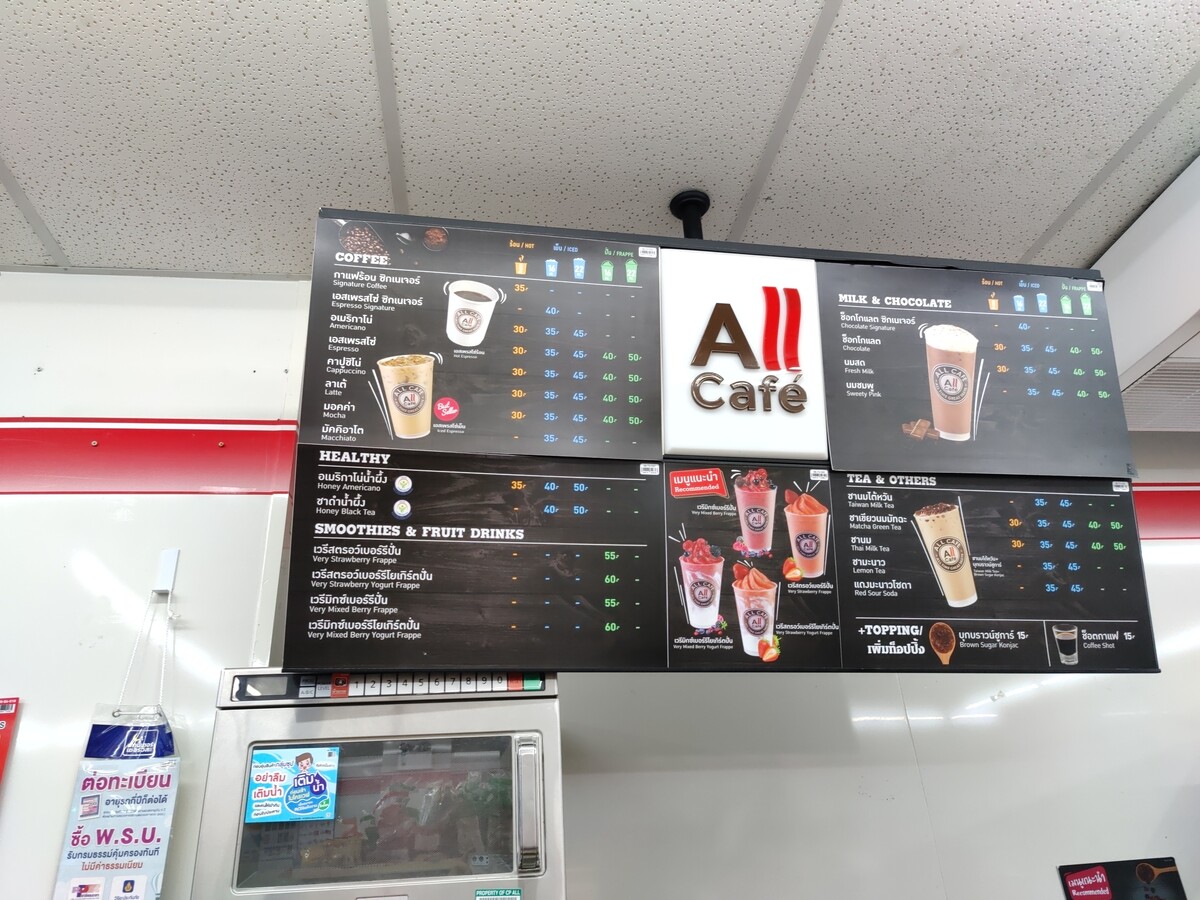 A board showing coffee menu at a 7-Eleven store along with rates in Pattaya.
A board showing coffee menu at a 7-Eleven store along with rates in Pattaya.
 In this section of 7-Eleven, you can buy a premix coffee and mix it with hot water provided at the store to prepare.
In this section of 7-Eleven, you can buy a premix coffee and mix it with hot water provided at the store to prepare.
 Red wine being served in Air India
Red wine being served in Air India
 A first revision of the still only one-week old (at
A first revision of the still only one-week old (at  Last week we held our promised miniDebConf in Santa Fe City, Santa Fe province,
Argentina just across the river from Paran , where I have spent almost six
beautiful months I will never forget.
Last week we held our promised miniDebConf in Santa Fe City, Santa Fe province,
Argentina just across the river from Paran , where I have spent almost six
beautiful months I will never forget.




 I like using one machine and setup for everything, from serious development work to hobby projects to managing my finances. This is very convenient, as often the lines between these are blurred. But it is also scary if I think of the large number of people who I have to trust to not want to extract all my personal data. Whenever I run a
I like using one machine and setup for everything, from serious development work to hobby projects to managing my finances. This is very convenient, as often the lines between these are blurred. But it is also scary if I think of the large number of people who I have to trust to not want to extract all my personal data. Whenever I run a